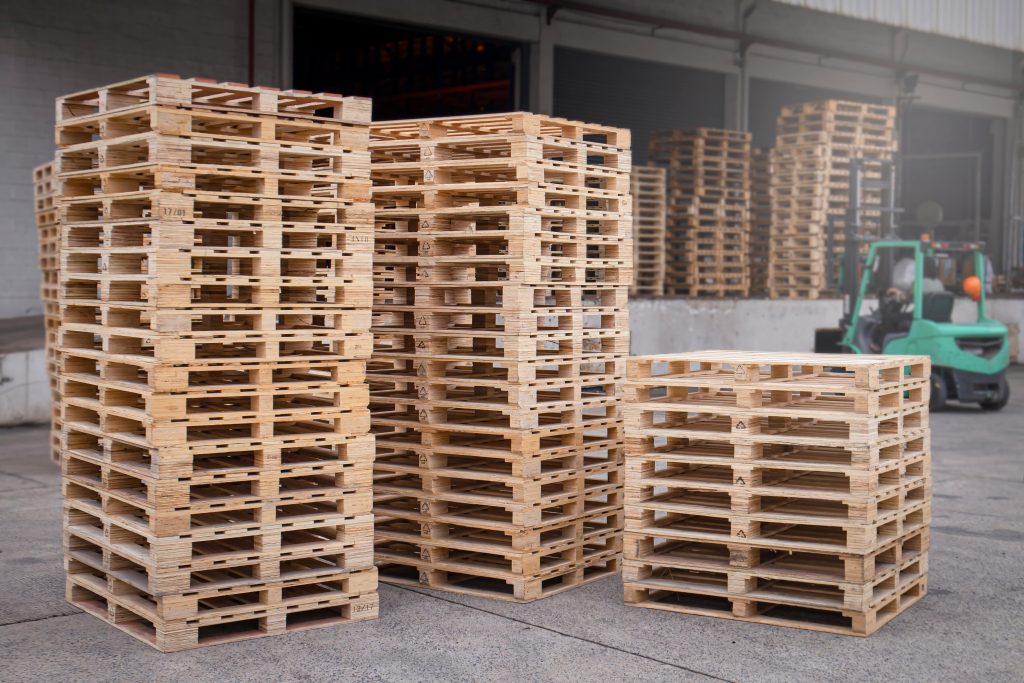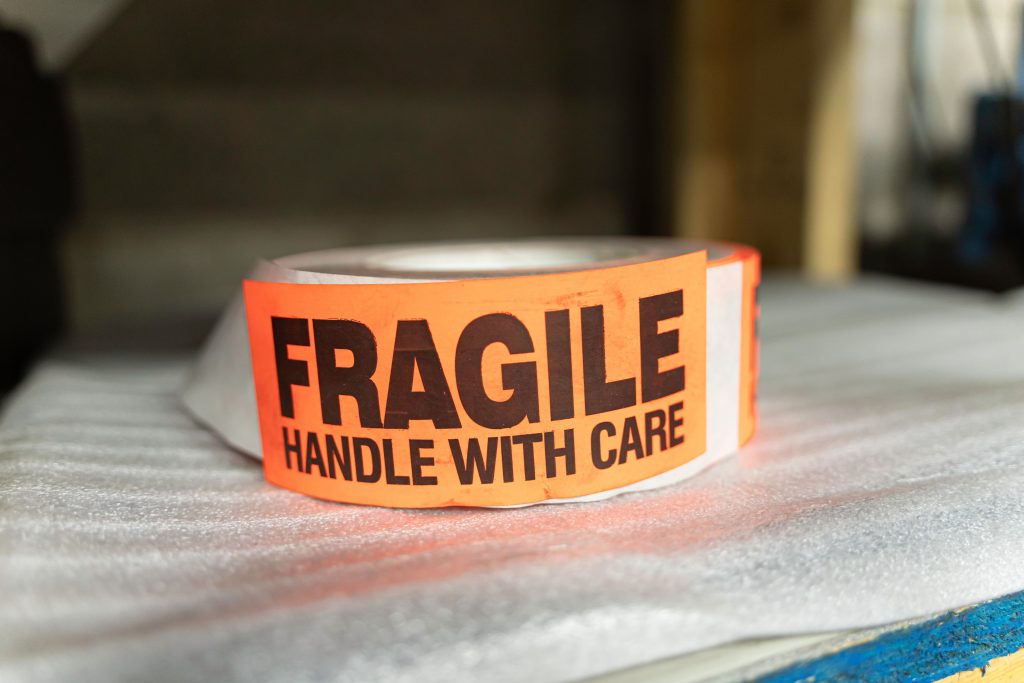July 19, 2023
Popular, convenient, and cost-effective, less-than-truckload (LTL) freight shipping is a way to distribute smaller pieces of cargo throughout the supply chain.
There are considerable perks associated with LTL shipping, but the process does have its potential drawbacks as well. Perhaps most notably, your cargo will be packed on a trailer alongside many other pallets, and despite leading carriers being quite skilled at loading, unloading, and protecting LTL cargo, accidents can still happen. The end result is a damaged shipment, meaning dissatisfied customers and a massive headache for everyone involved.
Thankfully, you can do your part to reduce the chances of any such issues by following a number of LTL freight and packaging best practices, such as the ones listed below:

Successfully shipping LTL freight and packaging starts with high-quality pallets: Ideally, you should look for sturdy wood pallets that are in good condition.
In any case, as you select your pallets, consider upgrading to four-way access options. These provide carriers and warehouse staff with more flexibility during the loading and unloading processes.
In addition, ensure that the type of pallet you choose is rated for the LTL freight and packaging it will be carrying. Otherwise, it will likely break under the combined weight of your items.

After you have found the right pallets for your shipment, it is critical for LTL freight and packaging that your team adheres to proper stacking procedures.
When building each layer of your palletized freight, the bottom layer of boxes lays the foundation for the top set. Ensure that none of the boxes hang over the edge of the pallet and that the second layer of boxes does not hang over the cartons below it, as that can decrease the strength of your boxes and lead to shifting. In a worst-case scenario, improper stacking can cause your boxes to collapse or fall off the pallet altogether.
Shrink wrap is a vital packaging component that helps your pallets stay together during transport, loading, and unloading. As such, always ensure that your logistics team is using an adequate amount of high-quality shrink wrap.
With the right amount of the material in place, your boxes will be less likely to fall or shift during transport, which in turn will decrease the chances of any damage occurring. If you want to maximize efficiency, consider investing in shrink-wrapping machines, which can save time and ensure wrapping consistency.

Properly labeling LTL freight and packaging is another key component to preventing damage during transport. Every single box in your shipment needs to be labeled before being passed off to the carrier. No matter what side of the pallet the carrier is standing on, they should be able to see a label that clearly identifies your cargo.
Proper labeling is especially important when it comes to fragile shipments. If you only apply one “Fragile” label to your pallet, there is no guarantee that it will remain visible once the cargo is loaded. As a result, the crew tasked with unloading your freight may treat it like any other piece of freight until they hear the contents inside break.
If you are shipping especially fragile cargo, consider crating it. Shrink-wrapped pallets do afford a high level of protection, but crates are the safest option in these circumstances.
When crating, confirm that you include labels on all sides of the box, including the lid. Clearly identify what your cargo is and whether it has any special designations (such as fragile or hazardous). Most importantly, ensure that any moveable cargo is braced or blocked inside the crate to prevent it from shifting during transport.
Leveraging the LTL freight and packaging tips outlined above, you can significantly reduce the likelihood of your cargo sustaining damage during shipment. Connect with R2 Logistics today to learn more about our LTL freight and end-to-end supply chain management solutions.
Input your search keywords and press Enter.
Along with our other available capabilities, R2 also offers your business intermodal services. If you would like to utilize this service or explore its options, our experienced staff can assist you in taking advantage of its possibilities. Let us help you find the most efficient and manageable cost for your shipment.
Intermodal Freight Benefits
– R2 associates are on hand 24/7 to assist in any matter
– We can accommodate cost effective solutions for any number of loads you may have
– Watch your shipment move from Point A to Point B online
– Multimodal transition is done seamlessly as your needs alter
– A contracted capacity with the ability to move your freight in the U.S., Canada, and Mexico
As supply chain complexity is in constant evolution, ingenuity is vital for gaining a competitive edge. Our expert associates provide the ability to appraise your logistics network to expand and apply more cost effective and service oriented solutions. Do you have just one requirement or several? The R2 team is only a phone call away to help position your company above the competition
R2’s Managed Transportation Program Includes:
– Collaboration – your business is our business. We will aid in the arrangement of meeting your supply chain demands with corporate guidelines
– Evaluation of your distribution system and design of the most cost effective network
– Providing transportation direction to bring control to your shipping budget and improving response time
With R2 Logistics’ excess of contracted carriers, the options are endless to find the right solution to move your freight. We also understand that getting it moved isn’t your only concern. That’s why it’s our first priority to choose the right option for you.
After the selection has been made we begin the process of following the freight from start to finish. At least 5 check calls are made for each shipment to ensure its security, and if you ever have a question, we’ll have an answer.
Truckload Freight Benefits
– We’re committed to you and your business – we’re available 24/7
– We set you up with your ONE and ONLY account representative
– We are not bound by U.S. borders – we make it easy for you to move shipments to and from Mexico and Canada
– Follow your shipments quickly and easily online
– Countless options – whether it’s for one load or for your entire supply chain, R2 has the solution you’re seeking
Knowing when to use Less Than Truckload shipments increases productivity, reduces freight spend, and streamlines freight shipping. LTL is ideal when freight doesn’t require the use of an entire trailer and weighs between 150 and 15,000 pounds.
Our relationships with the nation’s leading LTL carriers, allows R2 to pass our rates to our customers. Beyond our competitive rates, we have simplified the LTL shipping process with our innovative and game-changing Transportation Management System.
Using our TMS, shippers can realize the rewards from the moment they log on. With R2’s cloud-based TMS, shippers have access to real-time pricing, capacity across multiple carriers, and actionable reporting analysis.
LTL Freight Benefits with R29
– Analyze your logistics network and improve its current state
– Competitive rates pre-negotiated with our network of LTL carriers
– Ability to instantly quote, book, track and manage all shipments with R2 TMS
– A dedicated LTL freight expert to help with any of your freight questions
– Consolidated invoicing for all your shipments
– Unparalleled reporting capabilities making performance and cost analysis simpler than ever
We can understand that there’s never enough time in the day. If you have a shipment that should have been moved 24 hours ago we have the means of getting it there now. We have a multitude of contracted expedited and air freight carriers who can move your freight for you in a safe and reliable fashion. Let us do the work for you. We will track the shipment and let you know when it has arrived at its destination.
Expedited and Air Freight Benefits
– Dedicated dispatch and freight management from all R2 associates
– Extra precaution and 24/7 supervision for sensitive shipments
– ONE point of contact to answer any and every need you may have
– Customized options allowing you to utilize the best combination of service and value
– Accessibility to a surplus of different vehicle or trailer types as well as single and team driver
With a wide range of Ocean Freight services covering multiple equipment types and consolidation services, we ensure your cargo reaches its destination in the most cost-efficient manner. Our long-term relationships with ocean carriers allows R2 Logistics to provide both Less-Than-Container Load (LCL) and Full-Container Load (FCL) shipments. Our in-house team of international freight specialists manage your freight and also offer customs clearance and tariff classification.
R2’s Ocean Shipping Benefits
– Competitive rates pre-negotiated with our network of ocean carriers
– Use FCL shipping for valuable cargo that you wouldn’t want with another person’s shipment. FCL is also a good option if you need to ship loads of 12+ pallets
– LCL shipping means you share container space with other cargo. This can be a more cost-effective option for shipping smaller loads overseas.
– The ease of working with one company for all your logistics needs—including ocean, air, customs brokerage, trade compliance, and surface transportation
Simply put, Reverse Logistics is the return of products to a manufacturer or distributor from their customer. A well-organized Reverse Logistics program will result in direct benefits such as improved customer satisfaction and reductions in warehousing and distribution costs. Studies show 8-9% of all customer shipments are returned and 25-30% of e-retail shipments are as well. Managing Reverse Logistics costs are critical to running an efficient Supply Chain.
RA Numbers & Accounting
RA numbers are captured in the R2 TMS and linked with BOL numbers and Carrier PRO numbers resolving accounting issues due to missing RA numbers.
Damage & Recouping
Strong relationships with R2’s network of LTL carriers ensures shipments are handled with care.
Cost
The R2 TMS will select the most effective carrier for both transit time and cost. Customers are no longer held “hostage” with only one carrier choice.
When you’re hauling a shipment that’s oversized and overweight, attention to detail is crucial. The attention needed is exactly what you will receive with R2. With our vast network of nationwide carriers we can solve the problems you may face with your specialized shipment. Safety always plays a major role in any shipment moved under our watchful eyes. This makes us the easy choice for your next shipment requiring special handling.
Flatbed & Specialized Freight Benefits
– 24/7 dispatch supervision from start to finish
– Guaranteed certified and insured carriers used for every load
– ONE account executive available for any assistance needed
– Online tracking and document retrieval capability
– Shipping solutions designed to meet your unique needs